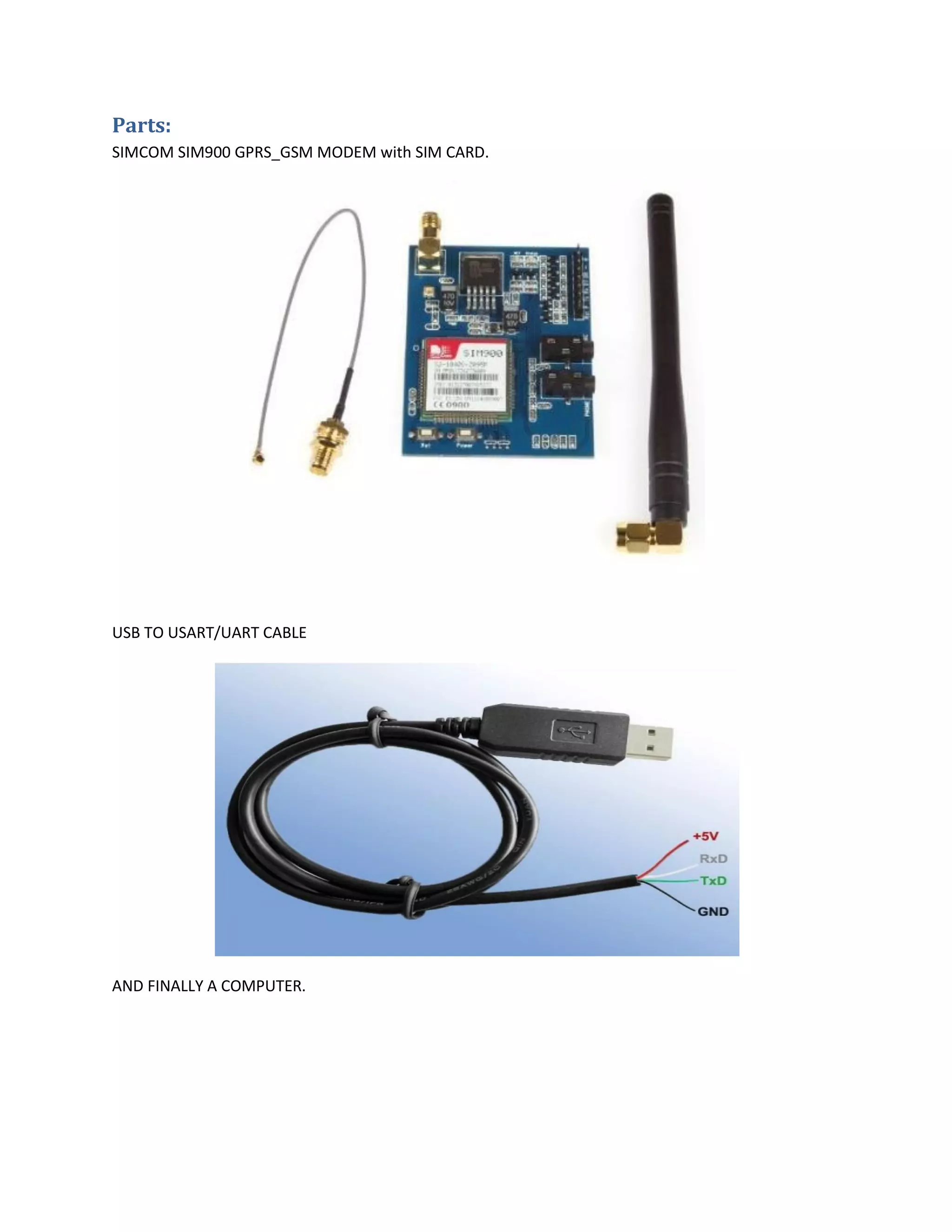This document provides instructions for sending data via TCP using a SIM900 GSM/GPRS module through a series of AT commands. It begins with testing the communication between the modem and device using the AT command. Next, it checks if the SIM is ready and connected to the network. Then it checks and configures the Internet access and IP settings. Several commands are used to connect to the Internet, bring up the wireless network, make a TCP connection to a server, and send a GET request to retrieve a webpage. The document provides examples of both a successful and unsuccessful request. It concludes by explaining how to close the TCP connection and port.
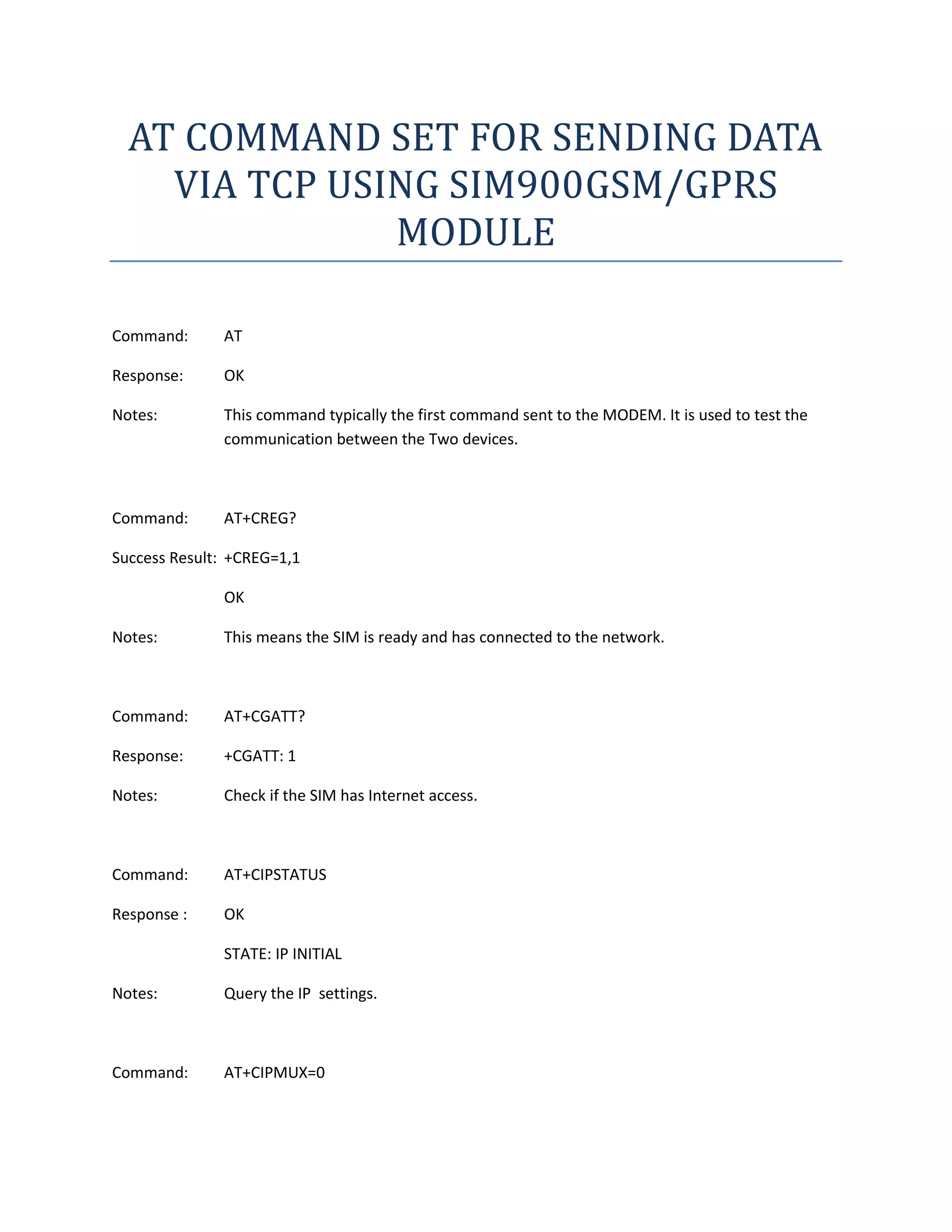
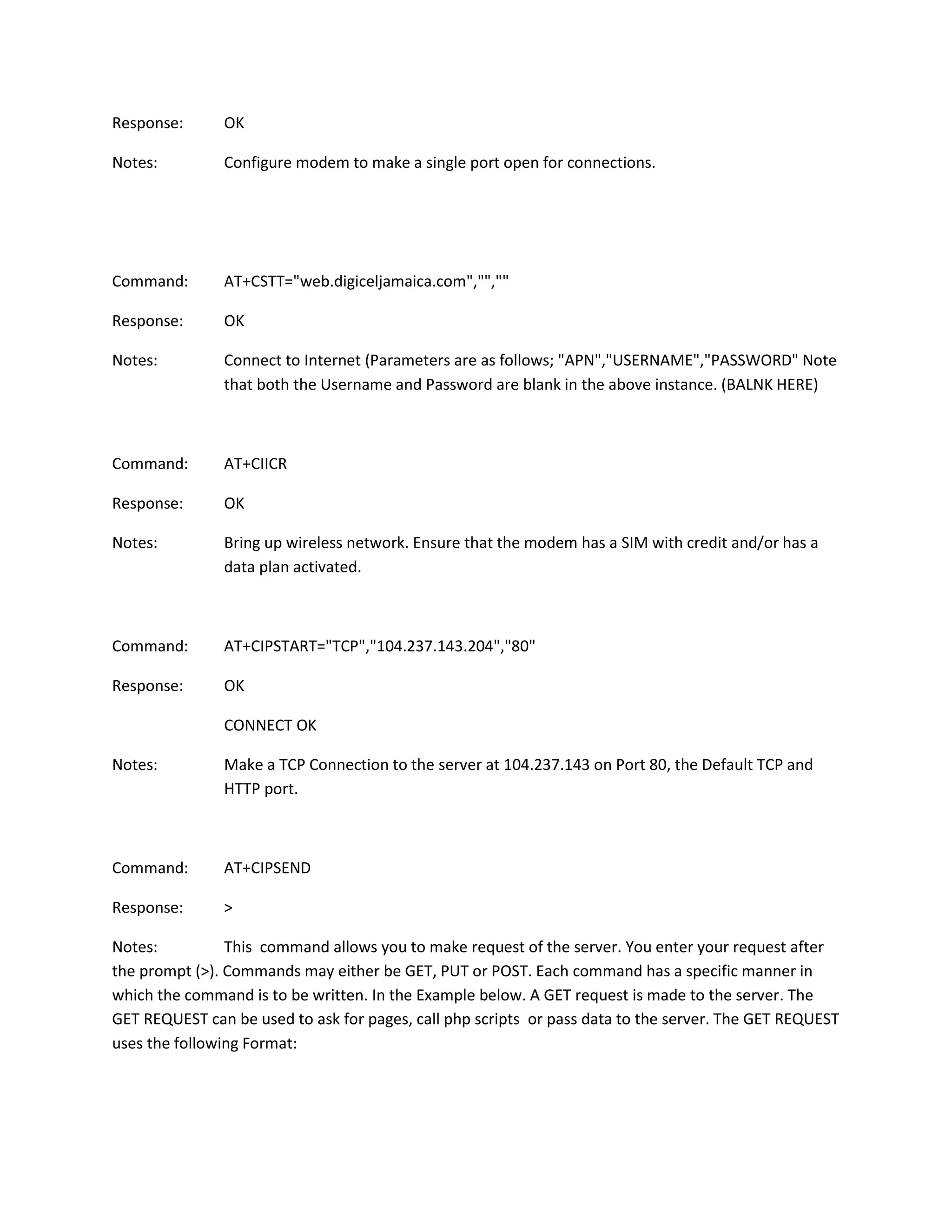
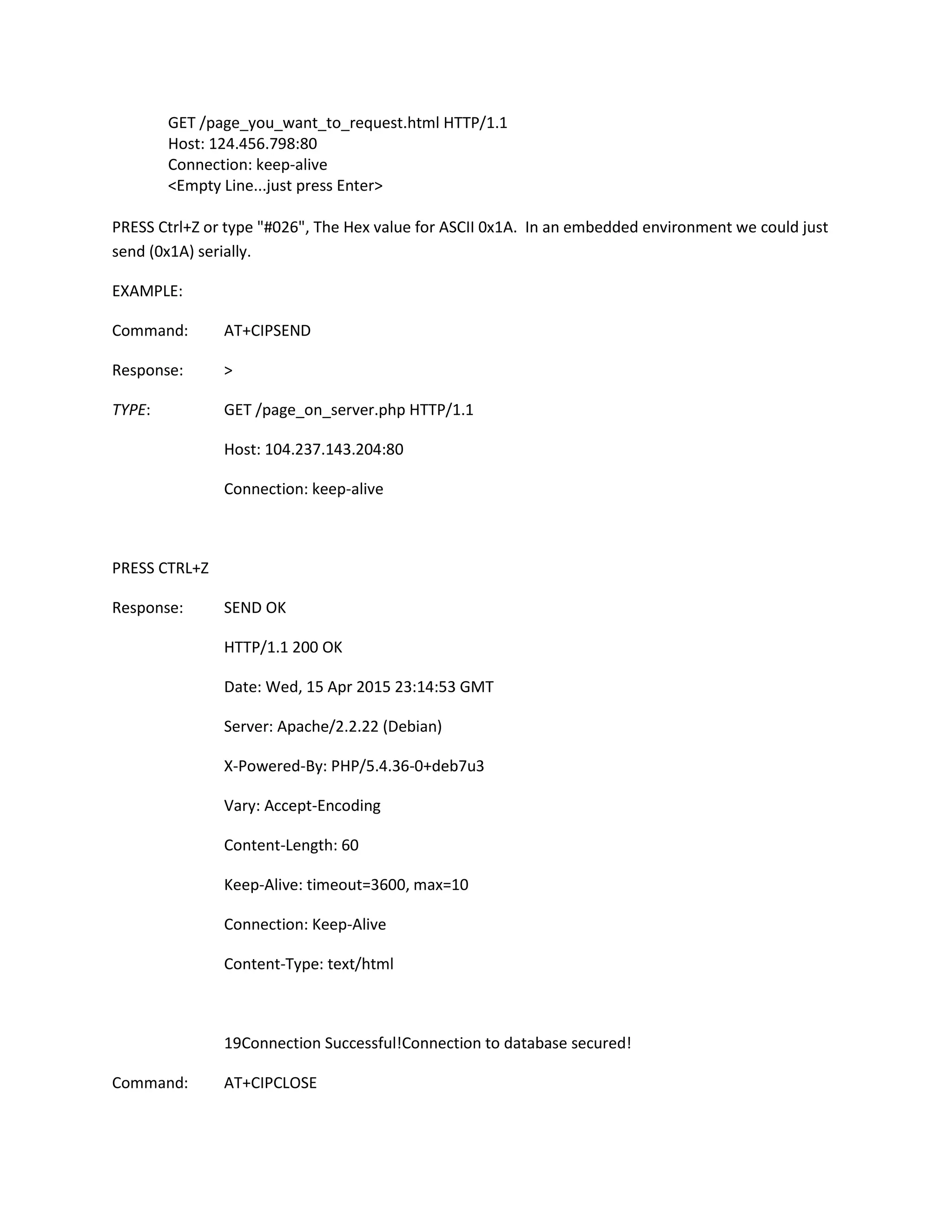
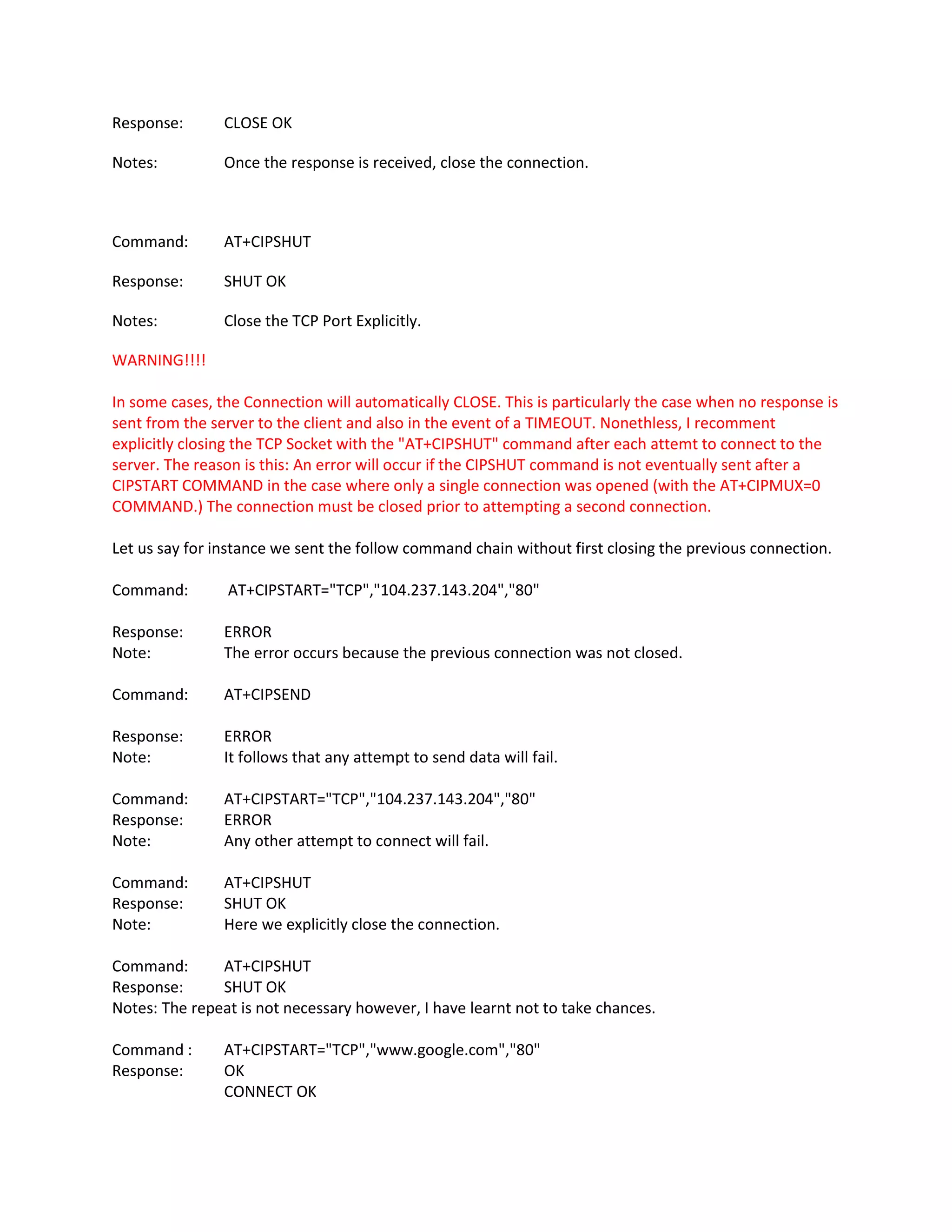
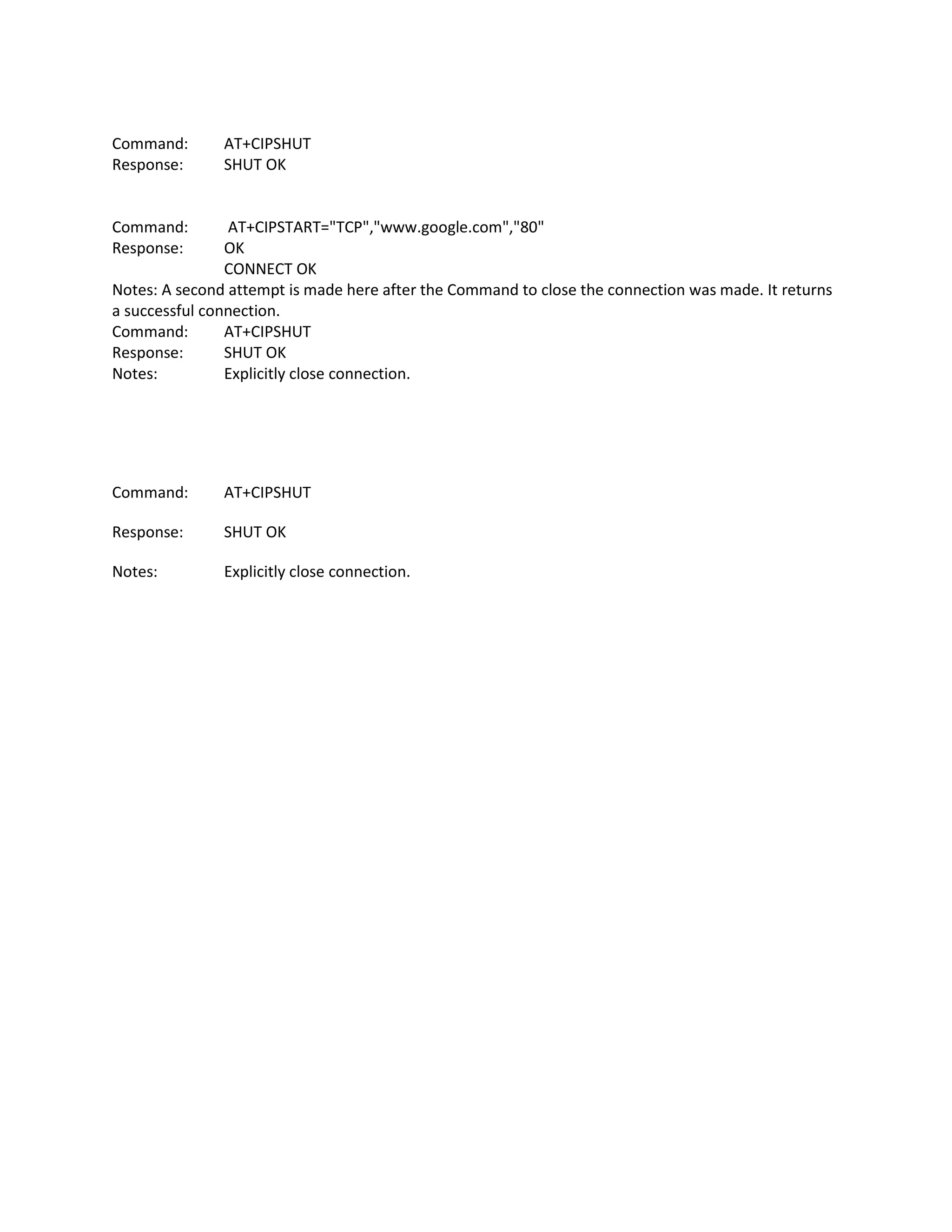
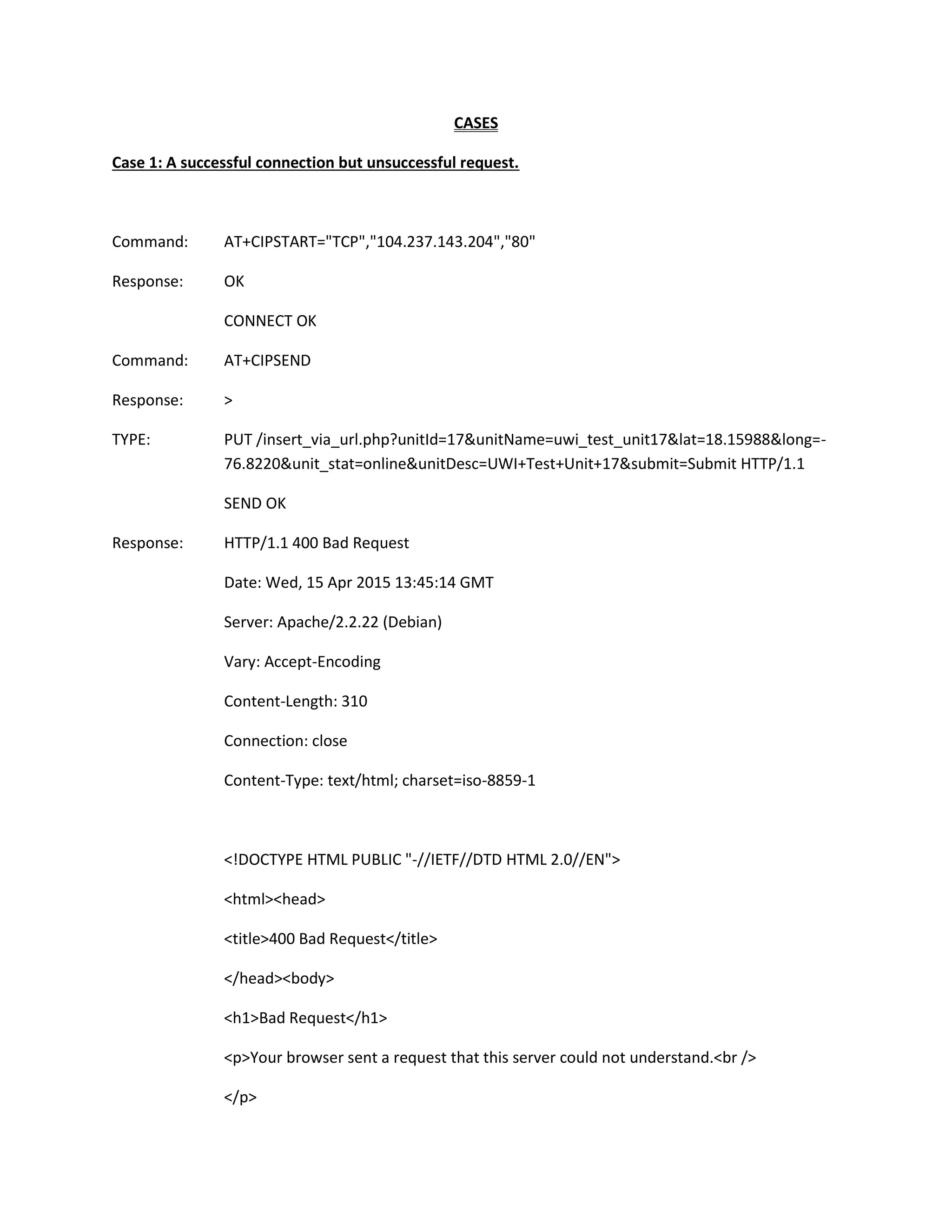
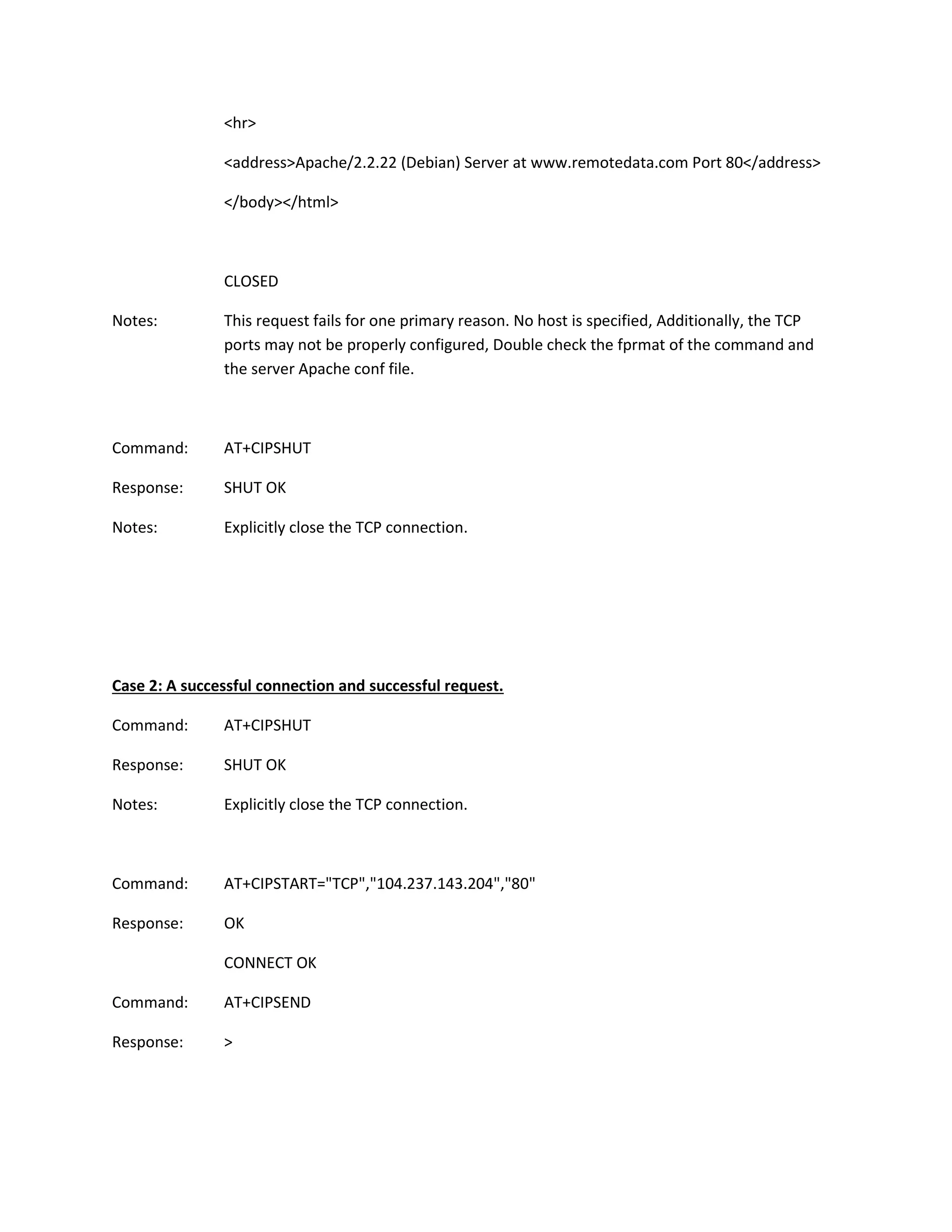
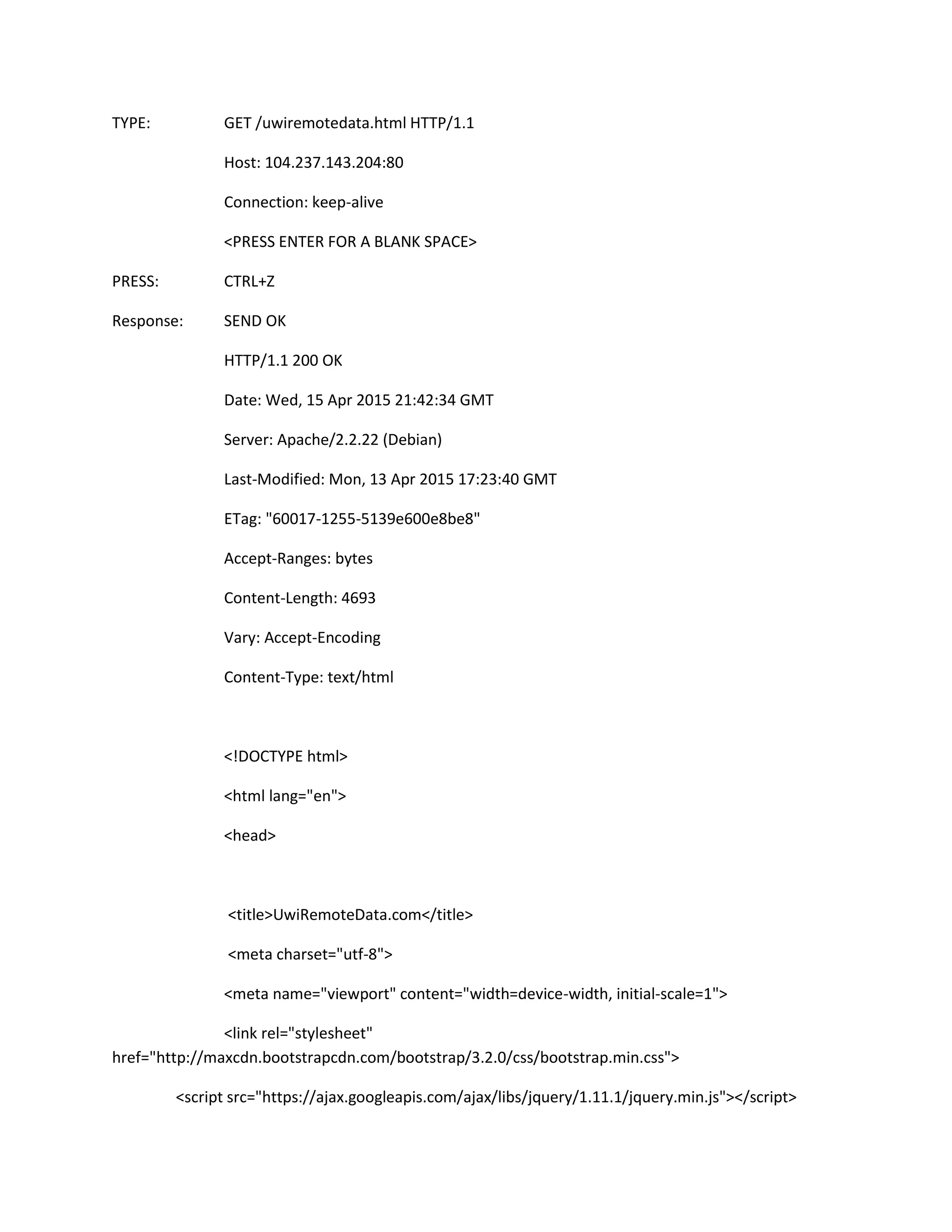
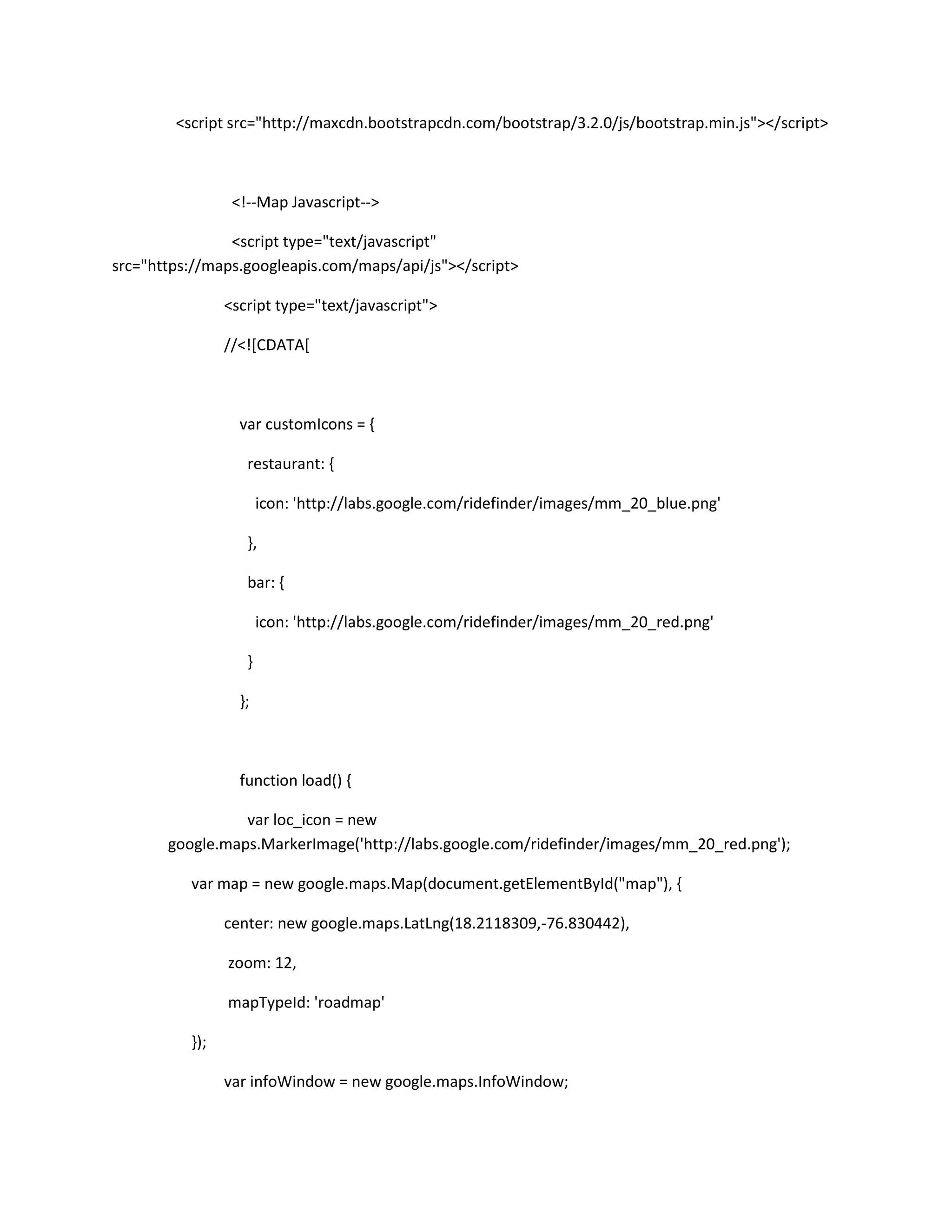
![// Change this depending on the name of your PHP file
downloadUrl("createXML.php", function(data) {
//FF cannot responseXML . Or it gives problems or something
var txt = data.responseText;
// So reponseText then parse it into xml
var parser = new DOMParser();
var xml = parser.parseFromString(txt, "application/xml");
var markers = xml.documentElement.getElementsByTagName("marker");
for (var i = 0; i < markers.length; i++) {
var id = markers[i].getAttribute("unitID");
var name = markers[i].getAttribute("unit_Name");
var status = markers[i].getAttribute("status");
var description = markers[i].getAttribute("Description");
var point = new google.maps.LatLng(
parseFloat(markers[i].getAttribute("Lat")),
parseFloat(markers[i].getAttribute("Long")));
var html = "<b>" +name+ "</b> <br/>" +status;
var icon = loc_icon;
var marker = new google.maps.Marker({](https://image.slidesharecdn.com/48ce5a01-d9ac-4ddd-a1b1-7785f3f433fe-150518231557-lva1-app6892/75/AT-COMMAND-SET-FOR-SENDING-DATA-VIA-TCP-USING-SIM900-10-2048.jpg)
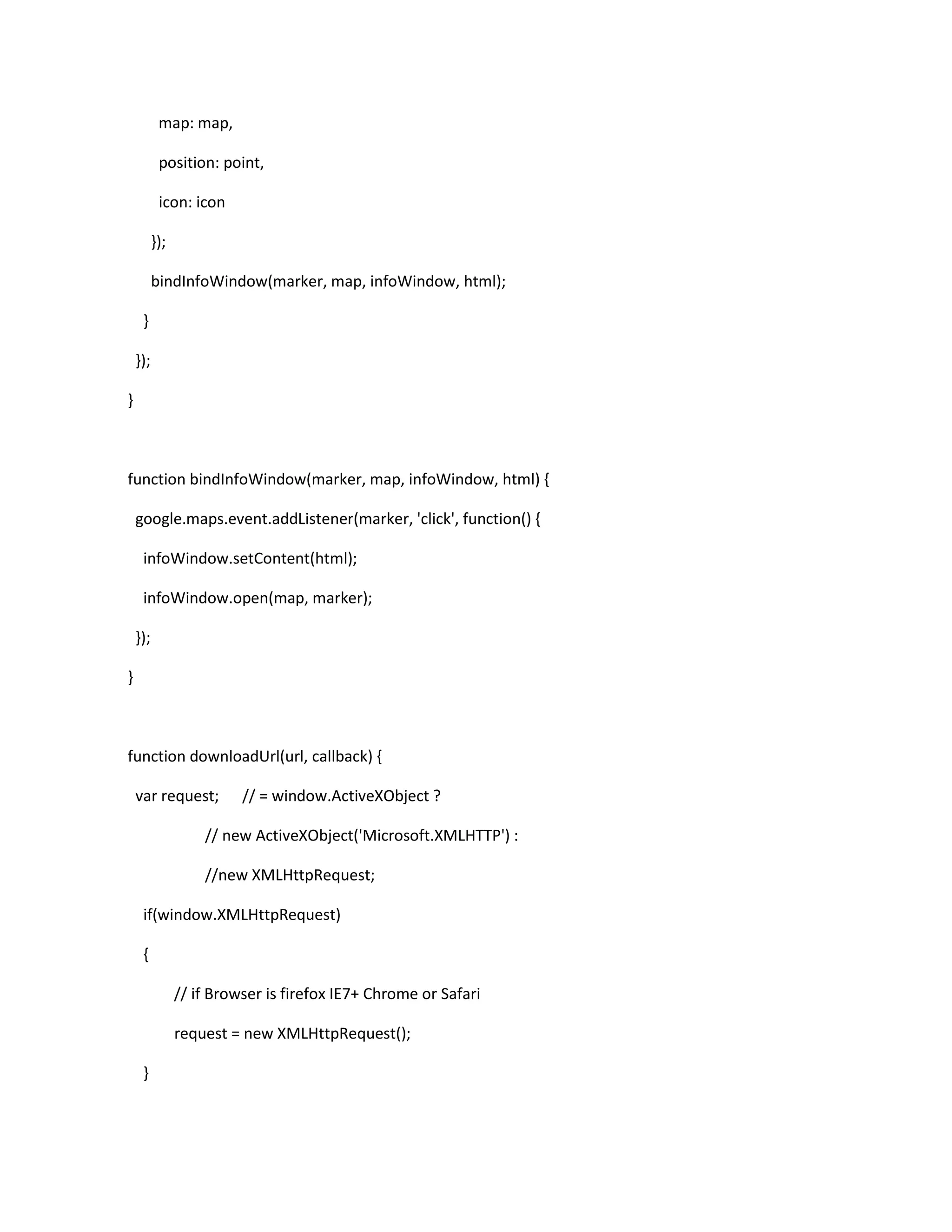
![else
{
//code for IE6 IE5
request = new ActiveXObject("Microsoft.XMLHTTP");
}
request.onreadystatechange = function() {
if (request.readyState == 4 && request.status==200) {
//request.onreadystatechange = doNothing;
callback(request);//, request.status);
}
};
request.open('GET', url, true);
request.send(null);
}
function doNothing() {}
//]]>
</script>
<style type="text/css">](https://image.slidesharecdn.com/48ce5a01-d9ac-4ddd-a1b1-7785f3f433fe-150518231557-lva1-app6892/75/AT-COMMAND-SET-FOR-SENDING-DATA-VIA-TCP-USING-SIM900-12-2048.jpg)

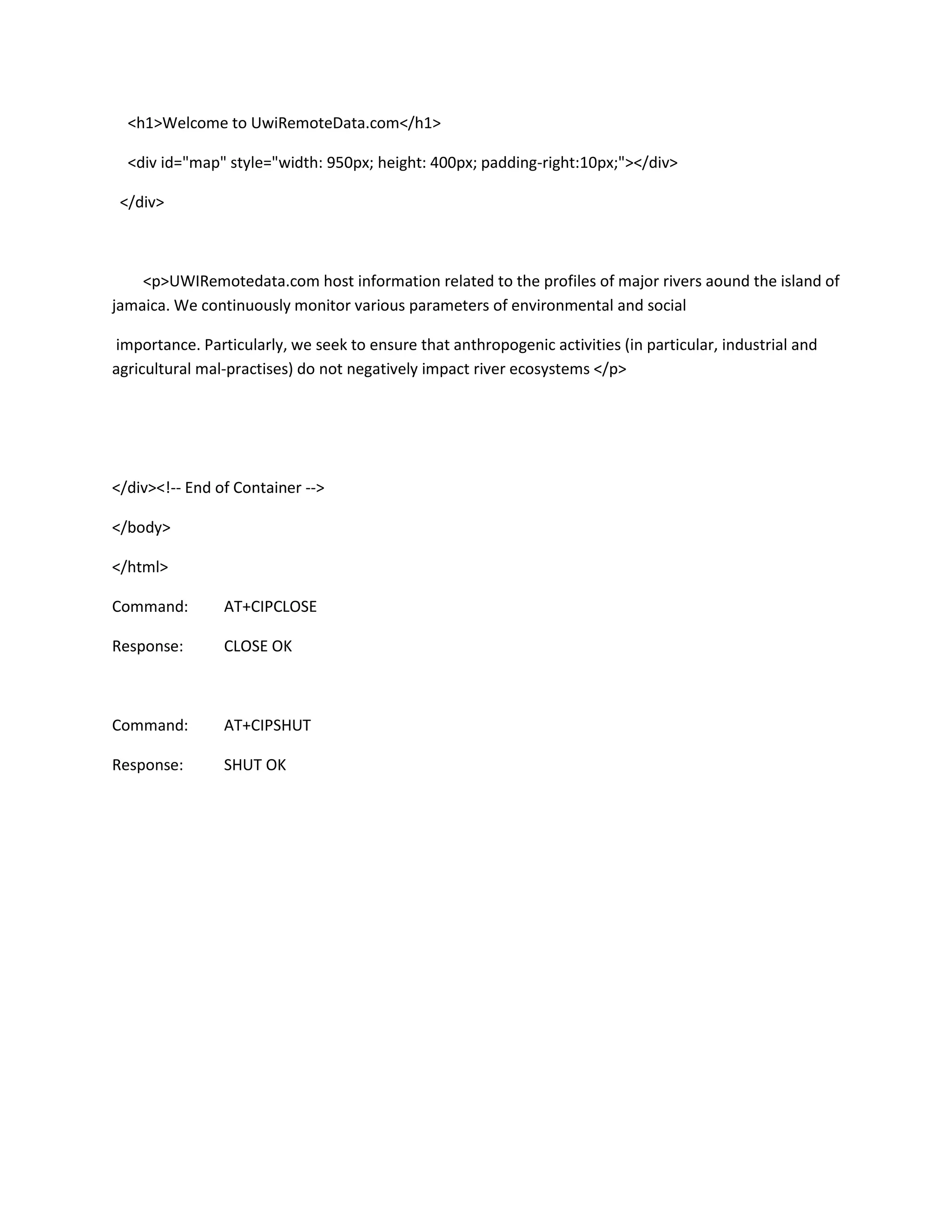
![References:
[1.] http://www.tcpipguide.com/free/t_HTTPMessagesMessageFormatsMethodsandStatusCodes.htm
[2.] https://vsblogs.wordpress.com/2013/11/28/tcp-connection-over-gprs-using-sim900-and-at-
commands/
[3.] http://www.cooking-hacks.com/documentation/tutorials/arduino-gprs-gsm-quadband-sim900
[4.] https://roysoala.wordpress.com/2012/11/20/gprs-shield-sim900-arduino-get-data-application/
[5.] http://www.cyberciti.biz/tips/linux-increasing-or-decreasing-tcp-sockets-timeouts.html
[6.] http://forum.arduino.cc/index.php?topic=116867.0
[7.] https://vsblogs.wordpress.com/2013/11/28/tcp-connection-over-gprs-using-sim900-and-at-
commands/
[8.] http://en.wikipedia.org/wiki/List_of_TCP_and_UDP_port_numbers
[9.] http://www.tcpipguide.com/free/t_HTTPMessagesMessageFormatsMethodsandStatusCodes.htm
[10] http://www.cooking-
hacks.com/skin/frontend/default/cooking/pdf/SIM900_AT_Command_Manual.pdf
Supporting Documents:
1) SIM900 AT COMMAND MANUAL_V1.05 (SIMCOM)
2)](https://image.slidesharecdn.com/48ce5a01-d9ac-4ddd-a1b1-7785f3f433fe-150518231557-lva1-app6892/75/AT-COMMAND-SET-FOR-SENDING-DATA-VIA-TCP-USING-SIM900-15-2048.jpg)
